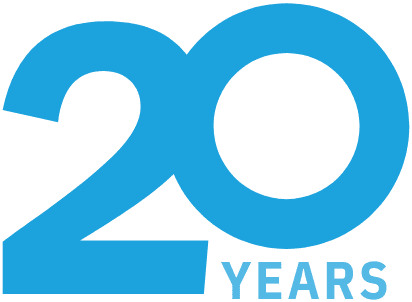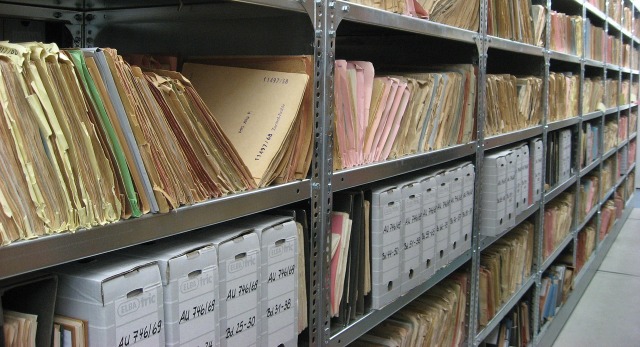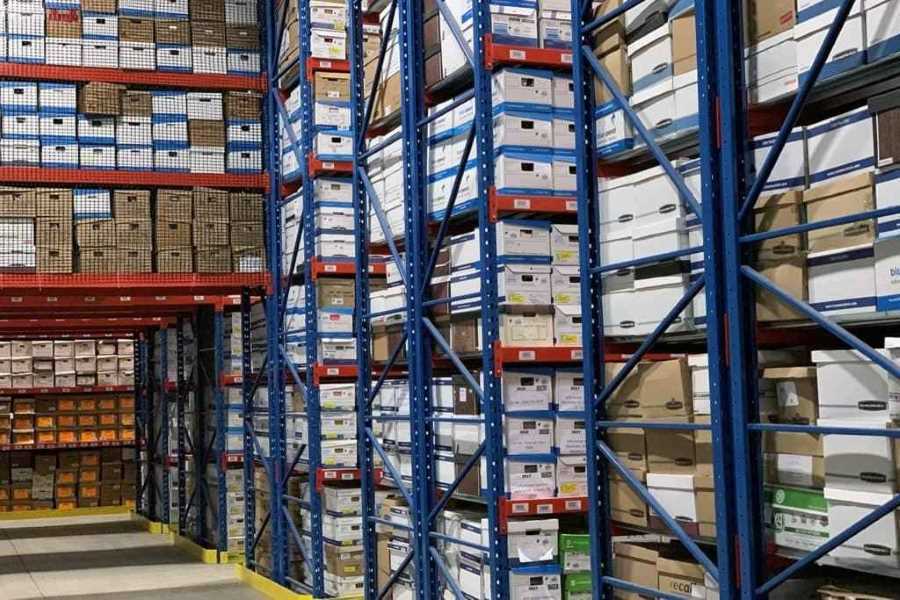Businesses amass a vast amount of paper documents and records, which require ongoing storage with easy access for a legislated amount of time. By law, retention periods can range from five years or more depending on the type of documents. Physical space to store these files in an office environment is often in short supply and the need for more quickly multiplies.
As a result, finding suitable storage space for documents is an ongoing challenge for companies and it can be a costly expense when not done right. To save time and money, some organizations scatter documents throughout multiple filing cabinets in empty corners of the office. However, without a proper document management system, these records are exposed to theft, non-compliance, damage, loss and legal liability. In the end, it’s not the best way to minimize risk or manage costs.
What is a Document Management System?
A document management system supports the processes required in managing information through its entire lifecycle, whether the information is a paper record or electronic document. This includes the systematic and efficient control of the creation, use, maintenance and destruction of documents while also meeting business and legislative requirements. Considered an important component of operational efficiency, document management systems add more value to information assets. Having a system in place also ensures ongoing compliance with privacy laws as it pertains to the management and accessibility of confidential information.
Researching Document Management Systems and Methods of Storage
Like any important business operations decision, you need to do your research to find the most comprehensive, cost-effective and secure storage solution for your documents. Having the right document management system in place provides numerous benefits to your business, such as keeping you compliant with record-keeping regulations, avoiding security risks and streamlining the overall workflow and productivity of employees. When researching your options, it’s important to factor in accessibility, document security and retention management practices of each method.
What are the Methods of Storage?
The three most common document management systems include:
- Utilizing a dedicated office storeroom within the workplace
- Renting an off-site self-storage unit in a public facility
- Using a professional records management service
Each document storage method has its advantages and disadvantages, as well as associated costs. To help you make an informed decision, let’s dive deeper into each document management system.
Document Management System #1: Using an Office Storeroom Within the Workplace
This method of storage involves the use of existing or newly acquired storage space in a workplace to retain important records and documents. This option is popular with businesses because it keeps information easily accessible and on-site.
Cost Considerations for Using an Office Storeroom for Document Management:
Using a storeroom within the workplace to retain files does seem like a logical solution, but costs quickly add up. In Toronto, office building lease rates hit the $50 to $90 per-square-foot range in Q3 2019, which is a very steep price to pay.
You also have to factor in the cost of storage supplies, like filing cabinets or file boxes. The average five-drawer vertical legal-sized filing cabinet costs nearly $600 and takes up almost 4 sq. ft. of space. If you had 20 filing cabinets in your storeroom (totalling $12,000 in one-time upfront equipment costs), you would pay $5,600 a year to store your files on-site based on an average annual lease rate of $70/sq. ft.
Should you need more space, your costs will continue to go up. But, if your information retention requirements decrease over time, you’ll continue to pay rent on the storeroom even if you no longer use it for document storage. Each time an employee stores, retrieves or re-files records, there are additional labour costs to keep in mind.
Advantages of Using an Office Storeroom for Document Management:
- Files are located on-site for quick access.
- May provide a useful function for otherwise unused office space.
Disadvantages of Using an Office Storeroom for Document Management:
- Office space is expensive and not always easy to come by.
- Office rental rates apply, even if the storeroom is not being fully utilized.
- Since document retention periods can range from five years or more, the overall volume of paper documents requiring storage rapidly increases.
- As more information is acquired, additional space, document storage racks and file boxes must be purchased.
- Unsecured document boxes, filing cabinets and storerooms are vulnerable to serious security threats.
- Employees may hurt themselves lifting heavy file boxes onto document storage racks.
- Without a proper document management system, records can be susceptible to damage or loss.
- Employees must spend time retrieving documents, taking them away from assigned job functions.
- Managing records internally without proper resources or training can lead to compliance issues.
- Employees are responsible for document management, including the monitoring of retention periods and timely destruction.
Document Management System #2: Renting a Self-storage Unit
This method of storage involves renting a self-storage unit in a public facility to retain important records and documents at an off-site location. For small businesses or companies with a small number of files, a self-storage unit is a common solution.
Cost Considerations for Renting a Self-storage Unit for Document Management:
Self-storage space is easy to find in many towns and cities across Ontario, making it an accessible option for businesses. On the surface, public storage facilities appear to be affordable, especially when providers offer special promotions, like getting one month free. But there are certain costs to keep in mind when choosing this method of document storage, such as rent.
In North America, the average self-storage locker is 10 ft. x 10 ft. in size, which costs between $190-$395 per month in the Toronto core. In Mississauga, you can expect to pay $195-$260 per month for one 10 ft. x 10 ft. unit or $180-$240 per month in Oakville. If you require a larger storage locker, monthly lease rates are more expensive. Even if you don’t use your locker to store your files, you are still required to pay rent.
Storage units are empty spaces, so you will need to factor in the cost of document storage racks and file boxes for organizational purposes. Document storage racks can range from $200 to $400 in price, depending on the size you need, while heavy-duty file boxes can cost anywhere from $4.50 to $9.50 per box. Simply stacking boxes on top of one another isn’t an effective use of space. You’ll waste valuable time and money retrieving files, plus this damages documents and compromises workplace safety.
Since public storage facilities are located off-site, you must also consider the time, mileage and fuel costs required for employees to travel to the locker any time a file needs to be accessed or returned.
Advantages of Renting a Self-storage Unit for Document Management:
- Reduces the need for expensive office space and filing cabinets to store documents and critical information.
- Consolidates important records off-site in one designated area.
- There are many self-storage locations to choose from.
- Provides some control of access compared to an unsecured storeroom or filing cabinet.
Disadvantages of Renting a Self-storage Unit for Document Management:
- Rent is an ongoing cost that is charged whether you use the locker or not.
- Many document storage racks and file boxes must be purchased separately to keep documents organized.
- Takes employees time and energy to find a storage unit, assemble document storage racks and move file boxes.
- Retrieving files takes employees away from essential job responsibilities.
- Employees may hurt themselves by transporting and lifting heavy document boxes.
- Employees will require reimbursement for mileage each time they travel to the storage facility.
- Inadequate climate control, fire protection and pest control can lead to document damage or loss.
- Not knowing what’s being stored in neighbouring lockers can impact the safety of your documents.
- As more records are acquired, additional storage space, document storage racks and file boxes must be purchased.
- Off-site documents can be forgotten or neglected, which causes compliance issues.
- Lack of 24/7 security can lead to a serious information breach or theft.
- Employees are responsible for document management, including the monitoring of retention periods and timely destruction.
Document Management System #3: Using a Professional Records Management Service
This method of storage involves using a records management service that stores and protects your documents in a highly secure and compliant off-site facility. This option is an excellent solution for small businesses and medium to large companies looking for cost-effective records storage backed by robust document management systems.
Cost Considerations for Using a Professional Records Management Service:
Utilizing valuable office space for long-term records storage is expensive and self-storage rental fees also add up. A more affordable solution is using a professional document management service, like Blue-Pencil.
For only a few dollars per box each year, you can store your documents in a climate-controlled facility with 24/7 surveillance and strict security protocols. You only pay for the document storage space you use, which is more affordable over time. Plus, when you factor in employee wages, depreciation of storage equipment and ongoing maintenance costs, a records management service is a cost-effective alternative to internal document management systems.
Advantages of Using a Professional Records Management Service:
- More cost-effective than leasing additional office space or paying rent for a storage unit.
- You only pay for how much storage space you use, which is more affordable over time.
- Easy, straight-forward set-up handled by trained professionals.
- Full flexibility to store as many or as little documents you need without any hassles.
- Reduces the need for physical office space to store documents and critical information.
- Decreases expensive overhead, like rent, file boxes and document storage racks.
- Employees are not responsible for filing, indexing and retrieving files – a records management service does this for you.
- Saves time and energy and boosts employee productivity.
- Eliminates the risk of workplace injuries.
- Files can be delivered or scanned on demand and sent electronically within hours.
- Records are easily accessible, even though they are located off-site.
- Documents can use an assigned barcode that captures important information to make it easier to search, locate and request files.
- Ability to use your computer to centrally manage records, order files and run inventory reports.
- Only authorized personnel get access to your documents.
- Files are stored in a climate-controlled facility with 24/7 surveillance and strict security protocols.
- A records management service can help you implement policies to comply with privacy laws.
- When a document’s retention period expires, the information is securely destroyed with your approval.
- Ensures your documents are never neglected or forgotten about throughout their entire lifecycle.
- Full peace of mind that your documents are safe, secure and properly managed.
- Supports business continuity in periods of disruption by always having reliable access to important records.
Disadvantages of a Using Professional Records Management Service:
- You don’t have direct on-site access to your information and documents like you would with an office storeroom.
Records Storage Methods Cost Comparison Table
When you compare all three document storage methods, a records management service is an obvious choice. Not only is the yearly investment lower compared to an office storeroom or self-storage unit, but a records management service is the most secure option.
| Method | Calculation | Yearly Investment |
|---|---|---|
| Office Storeroom | $70 per sq. ft. commercial real estate cost (annual average) x 100 sq. ft. + storage racking/cabinets | $7,000 per year + initial investment for storage racking/cabinets |
| Self-storage Unit | Average rent for 10 ft. x10 ft. space = $290 per month | $3480 per year + initial investment for storage racking/cabinets |
| Records Management Service | Average $0.65 per box per month. 250 boxes stored = $163 per month | $1950 per year with no investment in storage racking/cabinets |
Choose Blue-Pencil for Secure File Storage
At Blue-Pencil, we provide long-term records storage for sensitive documents so you can focus on your business knowing that your information is protected. When you choose our records management service, you’ll get the peace of mind that your critical documents are stored in our highly secure and compliant facility. Our document management systems also ensure that your records are managed throughout their entire lifecycle by authorized and trained professionals.
When you need access to important documents or information, retrieval is never more than one click away. Files can be physically delivered or an electronic document can be sent via email within hours, keeping your confidential information close at hand. And since Blue-Pencil charges only a few dollars per file box each year, our storage services are an affordable long-term solution. What you are quoted is the price you pay and you are only charged for the file storage space that you use. There are no hidden fees, upfront costs or expensive overhead to drive your profits down, too.
To learn how much you can save by storing your documents with Blue-Pencil or to find out more information about our document management systems, get in contact with our customer service team for a free quote.
Sources:
• Toronto Commercial Real Estate Figures
• Vertical File Storage
• Record Storage Racks
• File Storage Boxes
• Self-storage pricing




